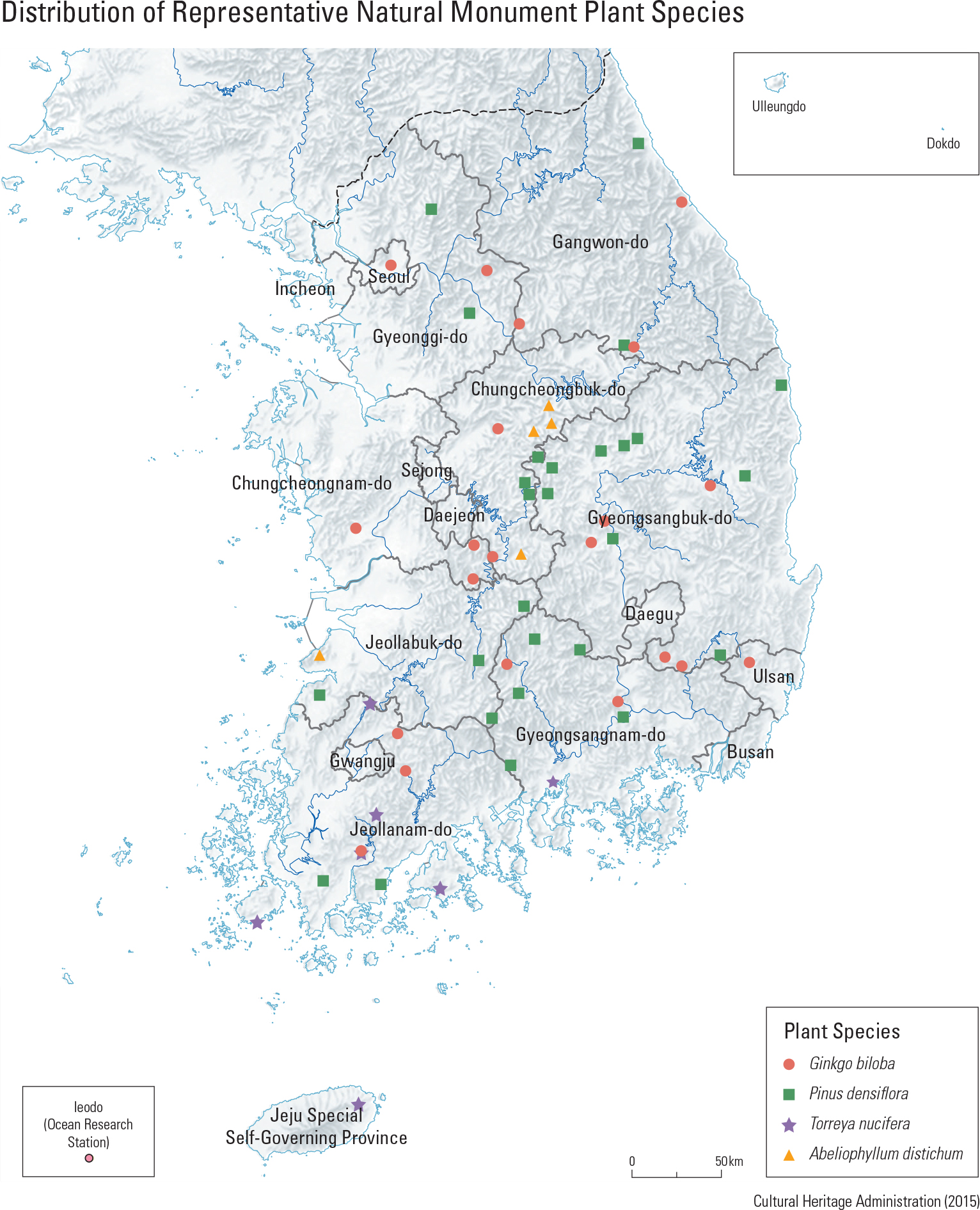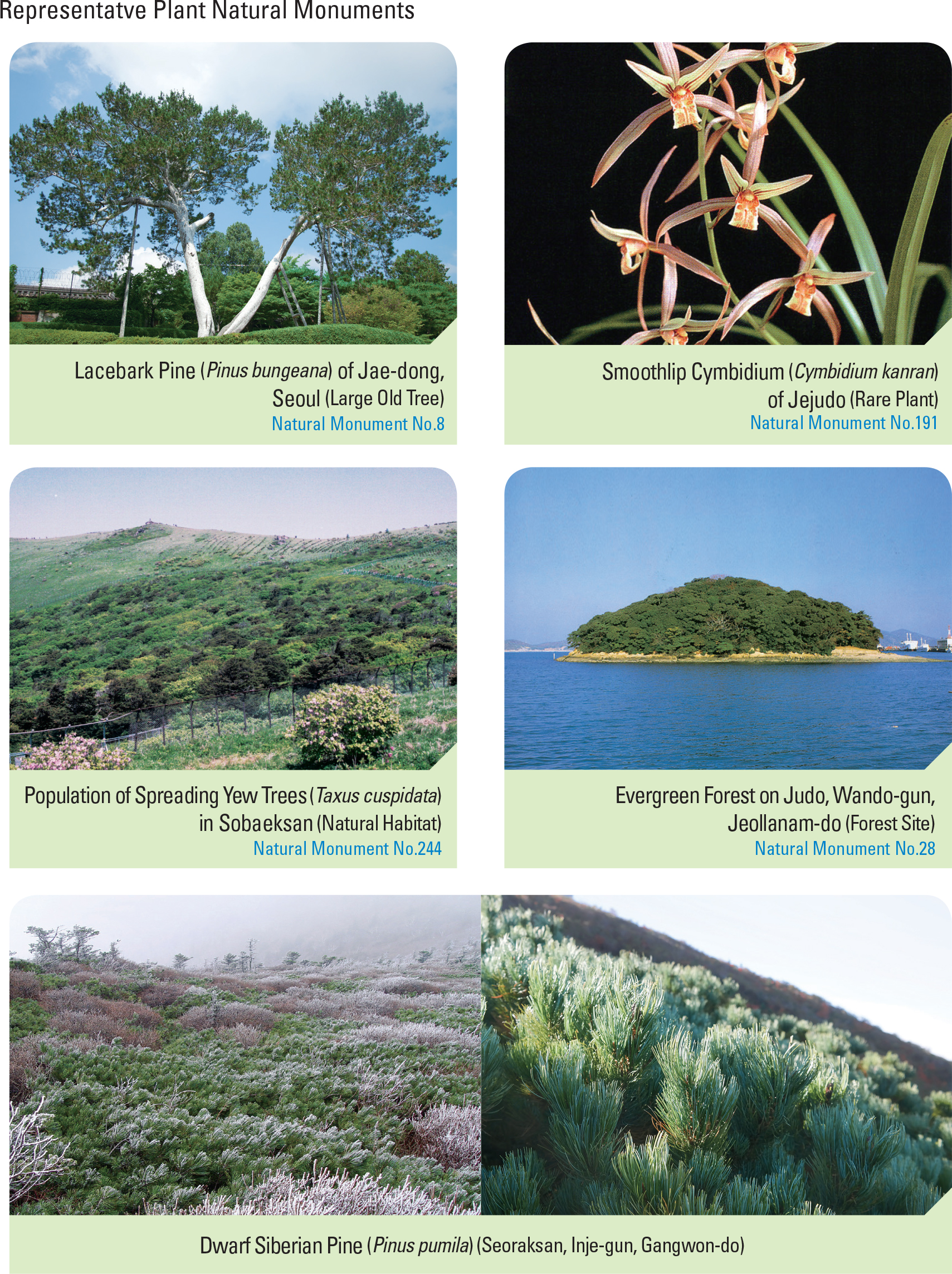English II
plants, and artificially planted historic wood- lands. State-designated plant natural monuments are mostly Ginkgo biloba, Pinus densiflora, and Juniperus chinensis. Torreya nucifera, Thuja ori- entalis, Wisteria floribunda, Camellia japonica, Chionanthus retusus, Prunus pendula, Poncirus trifoliata, Salix chaenomeloides, Cymbidium kan- ran, Berchemia berchemiifolia, Gleditsia japoni- ca, Machilus thunbergii, Celtis sinensis, Castanea crenata, Quercus variabilis, Zelkova serrata, Picrasma quassioides, Lagerstroemia indica, Ac- tinidia arguta, and Buxus koreana are also natural monuments. Among the old trees, most of the designated natural monuments are Pinus densi o- ra, Ginkgo biloba, Juniperus chinensis. Old trees, communities, and the northern range limit of the southern evergreen conifer, Torreya nucifera, and the natural habitats of the endemic species, Abeliophyllum distichum are also state-designated natural monuments of Korea. Natural monuments bear high academic and aesthetic values. Thus, legal protection and con- servation have been adapted. Natural monuments include animals and their habitats, plants and their natural colony areas, minerals, caves, other natu- ral and inorganic substances. There are 209 plant natural monuments, including 142 old trees, 17 rare plant species, 27 natural growing sites, and 33 forest and vegetation areas. State-designated plant natural monuments include endemic plant species, plant species growing in special envi- ronmental conditions such as dry land, wetlands, rivers, waterfalls, and hot springs. The list of state-designated plant natural monuments also in- cludes plant species at their geographical distribu- tional limit, famous trees, old trees, communities of evergreen broadleaf vegetation, specific plant communities, plant species at the distributional limit of their range, abnormally-shaped trees, holy trees at sanctuaries and village shrines, forests for sh shelter, primeval or virgin forests, alpine
page_2 |


